Morocco, a country known for its stunning landscapes and vibrant culture, is home to a diverse array of ethnic groups, with the two main ones being Arabs and Berbers.
Berber culture, in particular, plays a significant role in shaping the country’s customs, beliefs, and traditions.
In this article, we’ll delve deeper into the fascinating world of Berbers in Morocco, exploring their history, identity, traditions, and ways in which you can experience their unique lifestyle.
Table of Contents
The Berber Heritage
Berber History and Identity
The Berbers have a rich and multifaceted history that dates back centuries. Originally, they adhered to ancient belief systems, including animism, ancestor worship, and polytheism.
Over time, their religious landscape evolved, with many Berbers converting to Christianity or Judaism before the widespread Islamization of the region.
Today, the majority of Berbers are Muslims, primarily following the Sunni branch of Islam.
Berber identity goes beyond religion and encompasses a deep connection to the history and geography of North Africa.
While there may be variations in culture, traditions, and heritage among different Berber groups, they are all bound by a shared history and identity that unites them.
Language and Communication
Berbers speak various languages, with Tamazight being the umbrella term that encompasses the diverse languages spoken by Berber groups.
Other dialects such as Taselhit and Tarifit are also spoken in Morocco.
Historically, Berber languages were oral and had no written form, making them unique and distinct.
Though Arabic is the official language of Morocco, efforts have been made to preserve and promote the Berber language.
In 2011, Tamazight was officially recognized as one of the country’s official languages alongside Arabic.
Traditions and Social Structure within Berber Groups
Berber communities often operate on tribal principles, with a tribal leader, typically a man, in charge of the tribe.
These leaders hold decision-making and judicial powers, which may sometimes fall outside a country’s established legal and social framework.
Nevertheless, community members generally respect and abide by their leader’s decisions.
Marriage rituals within Berber groups can vary. In some, men hold the position of family head, while in others, women take on this role, overseeing most family matters.
Women are traditionally responsible for domestic chores, child-rearing, and crafting various items, both for personal use and for sale.
Men traditionally support their families through farming, adapting their movements to the seasons and the needs of their livestock.
Berber Groups of Morocco
In Morocco, there are several major Berber groups, each primarily associated with a specific geographical area:
- Riffians: Hailing from the northern part of the country, near the Riff Mountains.
- Zenatas: Another northern group, with communities in the north and northeast of Morocco.
- Chleuhs: Residing in areas around the Sous Valley, the High Atlas Mountains, and the Anti Atlas Mountains.
- Zayanes: Mainly found in the Middle Atlas area, specifically the Middle Atlas Mountains.
- Sanhaja: Inhabiting the Middle Atlas Mountains.
Berber Culture and Traditions in Morocco
Berber Cuisine
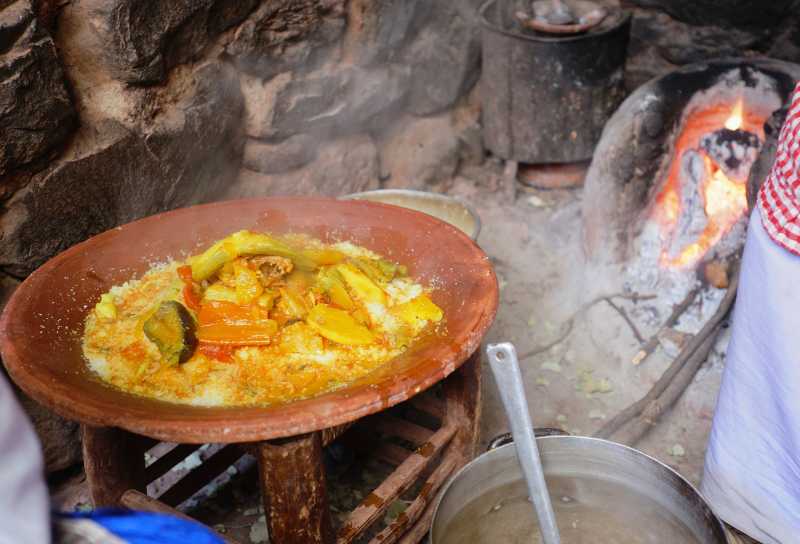
Several of Morocco’s most famous dishes have Berber roots. Couscous, for example, was a Berber staple made mostly from semolina; today, it’s a common meal on Fridays.
Tagine is also historically a Berber dish, referring to the method of cooking various meats, seafood, and vegetables in a special clay pot over a fire.
Berber Music
Berber music in Morocco is quite distinctive. It is a popular type of folk music around the country, though keen listeners will notice a variety of regional styles.
Village music, which generally uses drums and flutes, is a type of music that is generally performed communally for entertainment and pleasure, while there are also ritual tunes for special occasions and ceremonies.
Rai is another type of Berber music popular around Morocco and neighbouring Algeria.
Berber Arts & Crafts
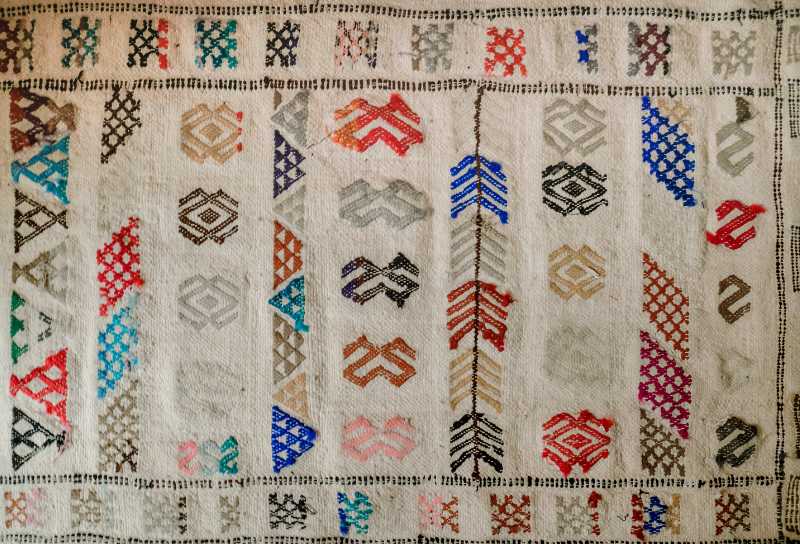
Morocco’s Berber groups are known for their rich weaving traditions (especially related to fine rugs), with different groups traditionally producing their own distinct patterns.
The famous Berber carpets, or “kilims,” are a significant aspect of their art, known for their intricate designs and rich, natural dyes.
Berber jewelry is typically ornate and elaborate, and other crafts may include pottery and furnishings.
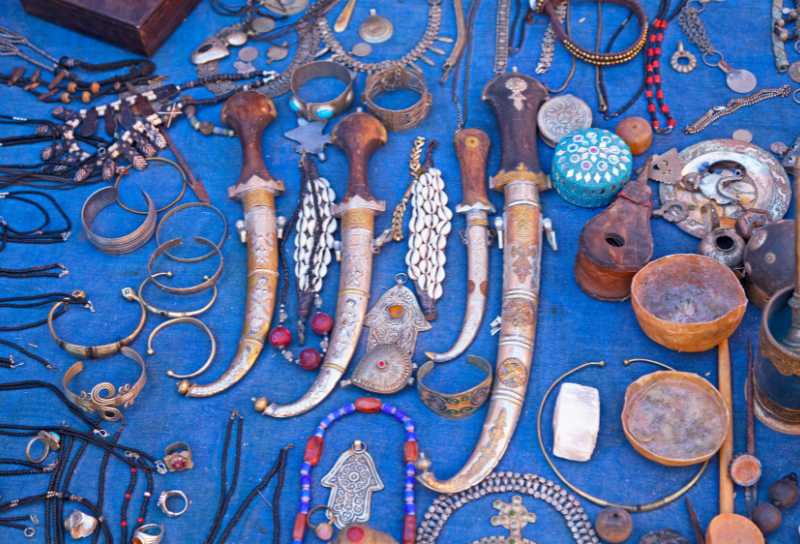
Berber Festivals
Morocco hosts vibrant festivals with Berber roots, such as The Fantasia, which showcases the impressive horse riding skills of Berber people.
The Imilchil Marriage Festival is another well-known event, celebrating inter-tribal marriages with dancing, feasting, and merriment.
Experiencing Berber Life from Marrakech
While Berbers live, work, and study in Marrakech, it is often hard to spot traditions in the daily way of city life.
There are, however, several places within easy reach of the old imperial city where visitors can immerse themselves fully in the Berber lifestyle.
Chez Ali
Right in the heart of Marrakech, the restaurant of Chez Ali offers the chance for visitors to watch an exciting Fantasia show and dine on delicious Moroccan cuisine.
Ourika Valley
The nearby Ourika Valley, located in the foothills of the Atlas Mountains, is one of the closest places to Marrakech where one can experience Berber culture.
Day trips to the scenic valley are popular, with many people opting to hike the multi-level waterfall at Setti Fatma, enjoy meals alongside the river, and enjoy various activities such as hiking and rafting.
Setti Fatma
Once a typical Berber settlement, the village of Setti Fatma has transitioned towards tourism.
You can find an abundance of stores selling handicrafts, private homes inviting guests for cooking lessons, and accommodations for travelers.
The Ecomusee Berbere is an excellent place to learn more about the ethnic group’s history.
Oukaimden
Oukaimeden is one of Morocco’s primary winter ski resorts. The mountain town is also a Berber town, and you can see stone- and adobe-built dwellings.
Asni: A Village of Fruit Orchards and Nut Trees
The village of Asni, located in the High Atlas Mountains, is also a great place to see the Berber way of life.
The village is known for its many fruit orchards and nut trees and, if you visit on a Sunday, you can browse and shop in the lively market.
Nearby Tahnaoute also has a large market on Tuesdays. Also close to hand, Ouirgane offers a range of activities such as hiking and horse riding, and you can also visit the large reservoir.
Imlil: A Charming Berber Village
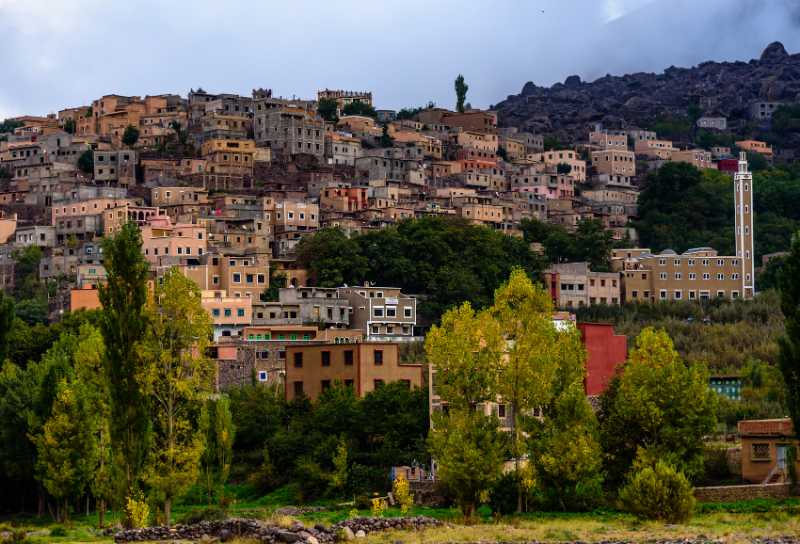
Imlil has many small Berber villages in the surrounding countryside, and hiking is a terrific way to pass through villages and soak up the scenic vistas.
Tanaghmeilt is a peaceful and charming Berber village, best-known forbeing the gateway to the stunning Ouzoud Falls.
Ait Benhaddou: A Berber Kasbah
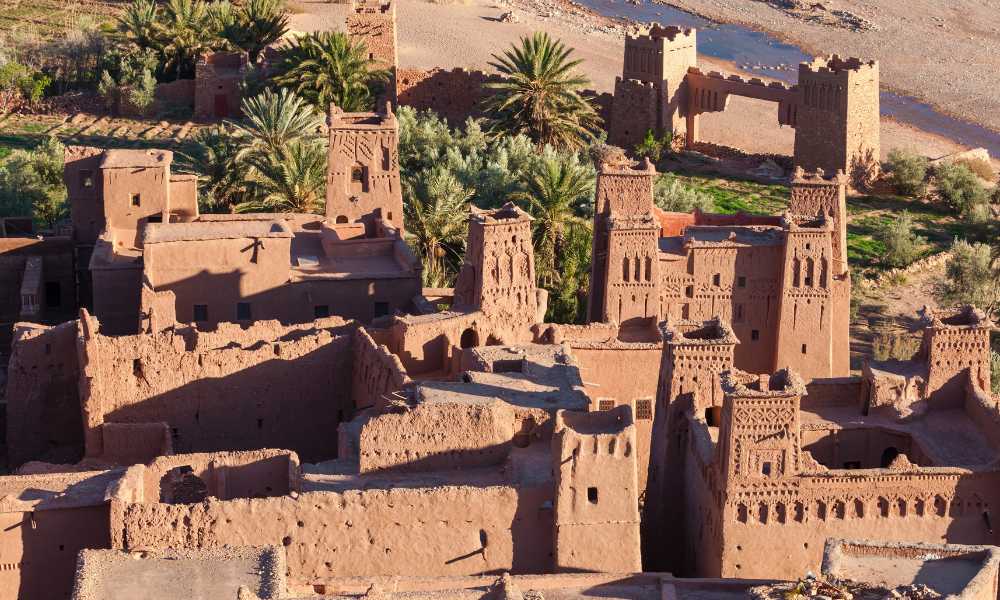
Farther afield and close to Ouarzazate, which is nicknamed the Door to the Desert, Ait Benhaddou is perhaps one of the country’s most famous Berber kasbahs.
Although most locals have moved elsewhere, the homes are still mainly family owned and maintained for tourism and movie filming purposes.
It’s a fantastic place to admire Berber architecture and see how tribes lived in times gone by.
Multi-day Trips to the Desert: A Journey Through Berber Life
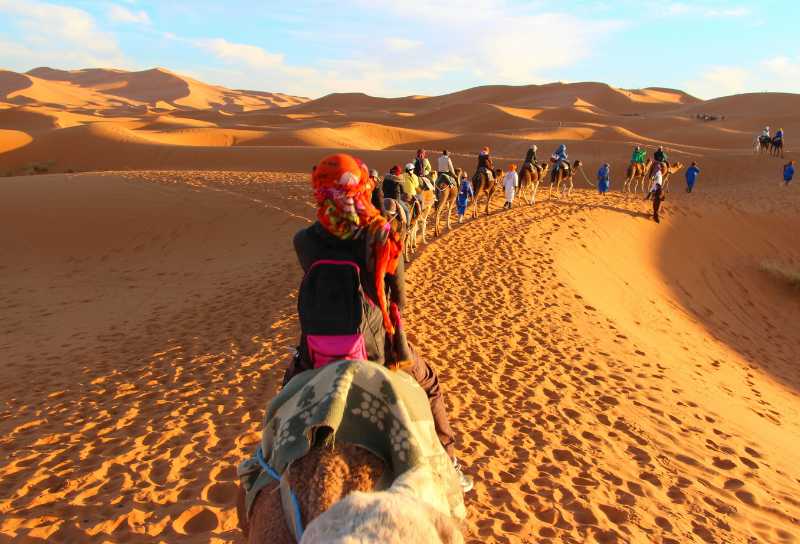
If you have more time, take a multi-day trip to the desert from Marrakech.
Merzouga and Zagora are both highly recommended, each offering the chance to see Berber life, gaze in wonder at the sweeping sands of the unforgiving Sahara Desert, and marvel at majestic sand dunes.
You can camp in the desert, take a camel ride, try sand boarding, indulge in sand bath therapy, dine on traditional cuisine, join ATV adventures, and more.
There are many places where you can easily see Berber life close to Marrakech.